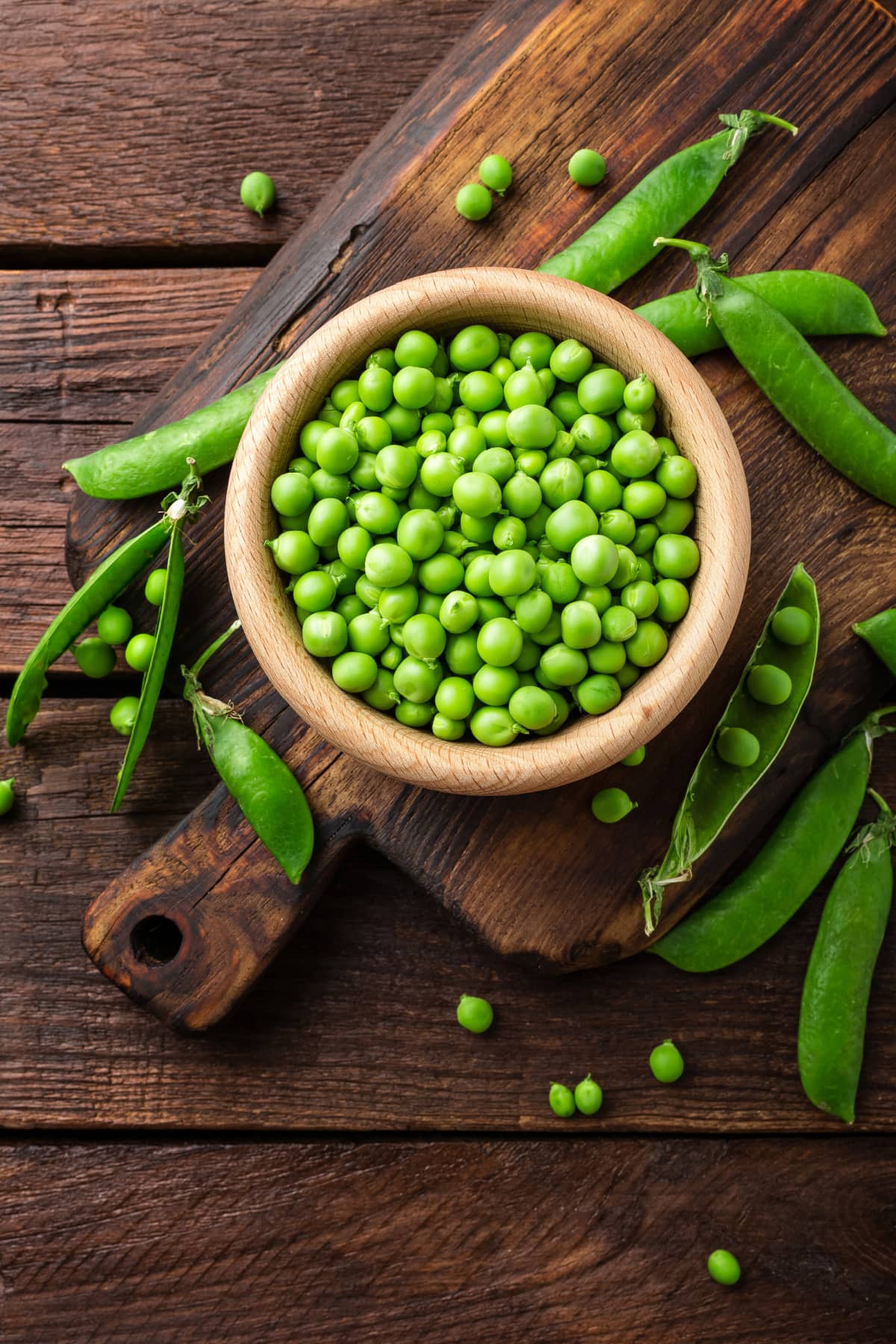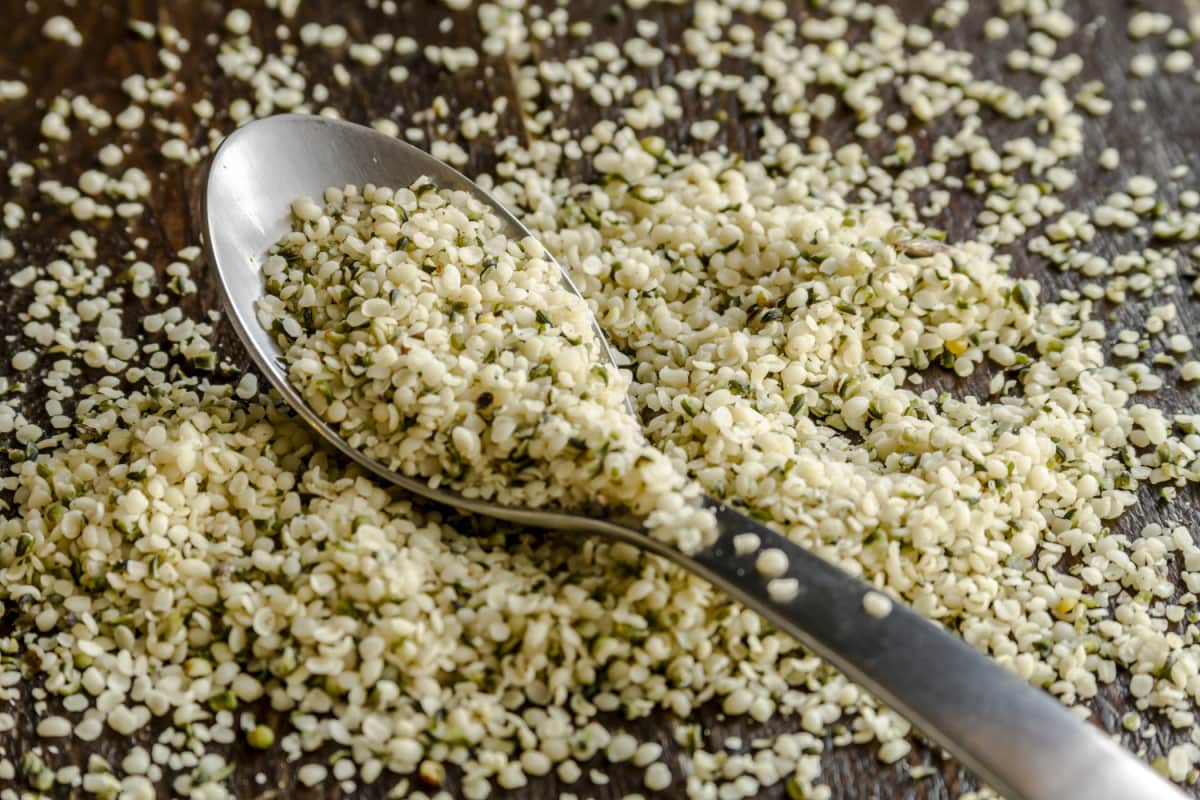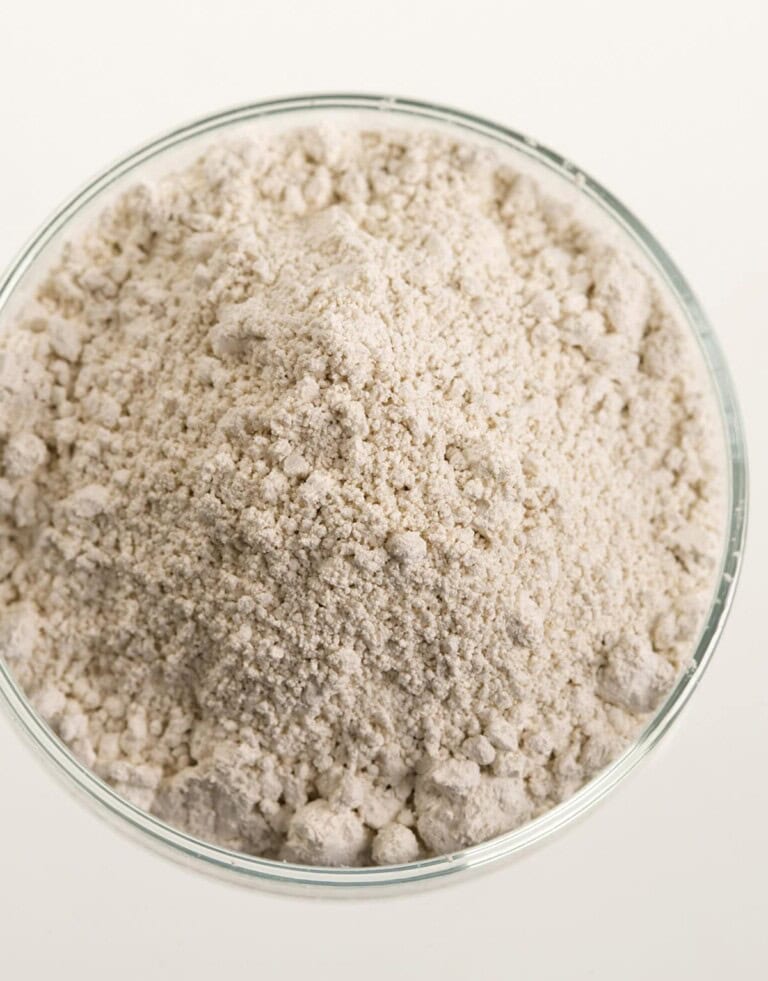The Best Vegan Protein Sources
The Best Vegan Protein Sources
Plant-based diets are no longer just a hype fad diet, but rather a lifestyle that many people are following. With this comes the question, what are the best vegan protein sources?
Whether you are vegan, vegetarian, or simply want to sometimes avoid animal products, a common question is whether you can meet your protein requirements on a plant-based diet; and even if you can, what foods exactly can you eat to boost your consumption? See Difference Between Vegan And Vegetarian and Difference Between Vegan And Plant-Based.
That’s precisely what you are about to find out.
Keep in mind, there are honestly so many more foods! This is just an overview.
Vegan protein: what are my options?
Protein is one of the biggest concerns for vegans.
Proteins are powerhouses, they lay the foundation for every cell because every cell in the human body contains protein.
When we eat protein, our body breaks these large molecules down into smaller units called amino acids.
These building blocks are used for many important functions in the body, including growth and repair of muscle, connective tissue, and skin. Amino acids are also needed for building hormones, blood proteins and enzymes.
There are 20 amino acids, 9 of which we must obtain from food sources; these are called “essential amino acids”.
When we talk about a “complete protein,” we’re referring to a food that contains all amino acids.
Protein sources can vary in number and not contain all 20 essential amino acids. Striving to get complete protein has its benefit. They contribute to the formation of organs and tissues.
Vegans rely solely on plant-based proteins like legumes, whole grains, nuts, and seeds but there’s more sources that’s becoming popular. Let’s take a look shall we!
What is protein? And why do you need it?
Protein is an essential macronutrient that is broken down in the body to release Amino acids. Amino acids are building blocks for bones, cartilage, muscles, blood, and skin. They also help in growth and maintenance, nutrient transportation and storage, tissue repair, and hormones and enzyme production.
Not consuming enough protein-containing foods may lead to a deficiency, which could eventually lead to health problems such as:
- Loss of muscle mass
- Delayed growth
- Thinning hair
- Brittle nails
- Fatigue
- Weakness
- Stunted growth in children
- High susceptibility to infections
How much protein do you need?
Protein requirements vary depending on different factors, including muscle mass, body weight, age, and physical activity. However, bodyweight is the most important determinant of all the requirements.
The recommended daily allowance (RDA) of protein for an adult is 0.8 grams per kilogram of body weight, but this amount may go higher for athletes.
Athletes need approximately 1.2-1.4 grams of protein per kilogram to meet their muscle maintenance and training recovery.
Plant based protein sources:
When most people think of protein, they think of meat. For this reason, one of the top questions for those who are vegans, vegetarians, and on any other plant-based diet is, “Where do you get your protein?”
The answer is easier and longer than you think! Here are just a few of the choices you have to incorporate into your daily meals.
Lentils
Lentils are one of the oldest, nutritionally rich foods on the planet. However, not all of them are equal in nutritional value. Black lentils contain the richest amount of protein when compared to other types.
Even so, brown, green, and red lentils are still an amazing vegan protein source that I eat very often, with 18 grams of protein in every cup. They also contain minerals such as folate, potassium, and iron.
They can be used in a variety of dishes, ranging from fresh salads to hearty soups and spice-infused dahls.
Lentils are also a great source of fiber, providing over half of the recommended daily fiber intake in a single cup (198 grams).
Furthermore, the type of fiber found in lentils has been shown to feed the good bacteria in your colon, which may help promote a healthy gut. Lentils may also reduce your chance of heart disease, diabetes, excess body weight, and certain types of cancer.
Chickpeas
Not only are chickpeas delicious, but they are packed with protein, fiber, folate, iron, potassium, phosphorus, and manganese.
Mostly found in Mediterranean mindful diets, they are incredibly beneficial for weight management, managing diabetes, improving brain function, and so much more.
A cup of boiled chickpeas (240 ml) will provide 15 grams of protein.
Beans
Kidney, black, pinto, and most other varieties of beans contain high amounts of protein per serving.
Most types of beans contain about 15 grams of protein per cooked cup (170 grams). They’re also excellent sources of complex carbs, fiber, iron, folate,
phosphorus, potassium, manganese, and several beneficial plant compounds.
Moreover, several studies show that a diet rich in beans and other legumes can help decrease cholesterol levels, manage blood sugar, lower blood pressure, and even reduce belly fat.
Quinoa
Quinoa is synonymous with the word superfood. Contrary to popular beliefs, it’s a seed and not a grain.
When it comes to plant protein and fiber, this superfood checks all the boxes.
Today, it is known for being a rich protein source for vegans. According to the USDA, 1 cup of cooked quinoa contains 8g of protein.
It is also a good source of fiber, iron, and magnesium.
Quinoa is considered a plant-based complete protein, meaning that it contains all 20 amino acids. Not all plant sources of protein contain all the amino acids or the same amounts, but quinoa is one of the grains highest in all essential amino acids.
Toss in some quinoa with black beans, or go for a more filling pilaf. The possibilities are endless!
Quinoa can also be used as a healthy alternative to rice. It clocks in at 8 grams of protein per cooked cup, and also 5 grams of fiber.
Nutritional yeast flakes
Nutritional yeast is a deactivated strain of Saccharomyces cerevisiae yeast, which is sold commercially as a yellow powder or flakes.
It has a cheesy flavor, which makes it a popular ingredient in dishes like mashed potatoes and scrambled tofu.
Nutritional yeast can also be sprinkled on top of pasta dishes or even enjoyed as a savory topping on popcorn.
Half an ounce (16 grams) of this complete source of plant protein provides 8 grams of protein and 3 grams of fiber.
Fortified nutritional yeast is also an excellent source of zinc, magnesium, copper, manganese, and all the B vitamins, including vitamin B12.
However, keep in mind that not all types of nutritional yeast are fortified, so be sure to check the label carefully.
Green peas
Peas are naturally sweet legumes. The health benefits of these vegetables are credited to the high levels of antioxidants and protein in just a limited amount. When compared to any other vegetable, peas have a relatively larger amount of protein.
Eating just one serving of peas a day promotes gut health, heart health, and aids weight loss.
Green peas are very easily added to many dishes and have 8 grams of protein per cup of cooked peas.
Almonds
Almonds are an excellent source of protein, healthy fats, and fiber.
Eating just a couple of them a day improves appetite control, gets rid of toxic elements, and controls blood sugar.
Although almonds don’t contain all the essential amino acids needed to build muscles, pairing them with other plant-based proteins will do the trick.
A whole cup of almonds has 30 grams of protein! Most of us won’t eat that many, since nuts are fairly high in calories. However, 1/4 cup of almonds is a great post-workout snack.
Chia seeds
The benefits of chia seeds were recognized during ancient times. Ever since then, the popularity has only gone up. These seeds go well with plant-based yogurts, salad, or oatmeal and load you up with antioxidants and essential nutrients.
Just two tablespoons of chia seeds are power-packed with whopping 4 grams of protein.
They also promote weight loss by increasing satiety, which helps to keep you from snacking on unhealthy junk.
Edamame, tofu, and other soy products
Soybeans are considered a whole source of protein. This means that they provide your body all the essential amino acids it needs.
Edamame is the Japanese word for immature soybeans. They have a sweet and slightly grassy taste. They need to be steamed or boiled before you eat them. Then, they can be enjoyed on their own or added to soups and salads. One cup of edamame has 17 grams of protein and only 190 calories.
Tofu is made from bean curds pressed together in a process similar to cheesemaking.
All three soy-based proteins contain iron, calcium, and 12–20 grams of protein per 3.5-ounce (100-gram) serving.
There are also so many more products made of soy that are high in protein, such as tofu, tempeh, and even soy milk.
Tempeh is a soy product made from cooking and slightly fermenting soybeans then pressing them into a cake.
It’s densely packed with rich essential minerals and vitamins. From protein to prebiotic, it’s truly a powerhouse of nutrition and helps in reducing cholesterol, regulating blood glucose, and reducing inflammation.
Usually prepared with nuts, seeds, legumes, or whole grains, it is significantly richer in protein and fiber, with 30 grams per cup of protein.
Tofu has 20 grams of protein per cup, and soy milk has 7 grams.
Hemp seeds
Like quinoa, hemp seeds are a complete protein with all the nine essential amino acids.
Hemp seeds are also a rare vegan source of essential fatty acids, like omega-3s, which can help fight depression!
Three tablespoons of hemp seeds have a whole 10 grams of protein!
They are also a good source of omega-3 fatty acids, iron, zinc, magnesium, calcium, and selenium.
You can enjoy your hemp seeds in your morning cereal or smoothie, or include them in your salad dressings and protein bars.
Oats
Oats are another delicious, naturally gluten-free, and convenient source of protein.
A cup of oatmeal can provide up to 5 grams of protein.
Besides, they are high in fiber, antioxidants, and minerals, including zinc, copper, magnesium, iron, magnesium, selenium, folate, and phosphorus.
They can lower cholesterol levels, improve blood glucose control, aid weight loss, improve skin health, and help relieve constipation.
Farro
To incorporate farro into your lifestyle, you can cook it like rice or use ground farro in place of flour.
Since it is naturally low in fat, cholesterol, and sodium, it can lighten up an otherwise heavy dish.
Though it is a whole grain, it is hearty and filling since it is rich in fiber, complex carbohydrates, and protein.
According to the USDA, 1 cup of cooked farro contains 5g of protein. It is a rich source of protein containing nonessential amino acids.
Pinto and black beans
Beans are generally high in protein, fiber, and minerals. Two of my favorites are black and pinto beans. They are at the top of the list, with one cup of cooked beans containing 15 grams of protein.
They are a great source of antioxidants, can control blood glucose, improve heart health, relieve digestive issues, maintain healthy bones, and reduce the risk of chronic diseases.
Nuts, seeds, and nut/seed butters
Nuts, seeds, and their derived products are great sources of protein.
One ounce (28 grams) contains 5–7 grams of protein, depending on the variety. Nuts and seeds are also great sources of fiber and healthy fats, along with iron, calcium, magnesium, selenium, phosphorus, vitamin E, and certain B vitamins. They likewise contain antioxidants, among other beneficial plant compounds.
When choosing which nuts and seeds to buy, keep in mind that blanching and roasting may damage the nutrients in nuts.
Protein-rich fruits and vegetables
Although all fruits and vegetables contain protein, some contain more than others.
Vegetables with the most protein include broccoli, spinach, asparagus, artichokes, potatoes, sweet potatoes, and Brussels sprouts, which typically contain 4–5 grams of protein per cooked cup.
Spirulina
This blue-green algae is definitely a nutritional powerhouse.
A 2-tablespoon (14-gram) serving provides 8 grams of complete protein, in addition to covering 22% of your daily requirements for iron and 95% of your daily copper needs.
Spirulina also contains high amounts of magnesium, riboflavin, manganese, potassium, and small amounts of most of the other nutrients your body needs, including essential fatty acids.
Furthermore, studies link consuming spirulina to health benefits ranging from a stronger immune system to reduced blood pressure to improved blood sugar and cholesterol levels.
Vegan protein sources (not gluten-free)
Here are a few more options for those of you who are not gluten-free:
Seitan
Seitan is a popular protein source for many vegans.
It’s made from gluten, the main protein in wheat. Unlike many soy-based meat alternatives, it closely resembles the look and texture of meat when cooked.
It contains about 25 grams of protein per 3.5 ounces (100 grams), making it one of the richest plant protein sources available.
But this one’s not complete on its own — it needs to be cooked in a soy sauce-rich broth to add gluten’s missing amino acid (lysine) to the chewy, very meat-like final product.
You can find this meat alternative in the refrigerated section of many grocery stores, especially at health food stores. You can also make your own version with vital wheat gluten.
Seitan can be pan-fried, sautéed, and even grilled, making it easy to incorporate into a variety of recipes.
However, because it contains wheat, people with gluten-related disorders should avoid eating seitan.
Ezekiel bread and other sprouted grain breads
Ezekiel bread is made from organic, sprouted whole grains and legumes. These include wheat, millet, barley, and spelt, as well as soybeans and lentils.
Two slices of Ezekiel bread contain approximately 8 grams of protein, which is slightly more than most other types of bread.
Couscous
Couscous is a type of grain product that is made of small, steamed balls of crushed durum wheat semolina.
Since it is made from the same type of wheat of many pasta products, it is often referred to as a grain or pasta product.
According to the USDA, a one-half-cup serving (about 1/4 cup dry) of whole wheat cooked couscous contains nearly 5g of protein
Clearly, protein is one of those essential nutrients that you cannot ignore. The best thing is that they are naturally available in most plant foods you’re likely to consume on a daily basis. So go and make your plate colorful with these delicious plant-based proteins.
More Vegan Information
- 6 Benefits of a Plant-Based Diet
- How To Transition to a Plant-Based Diet
- Should Vegans Take Supplements?
- Plant Iron Sources
- 8 Best Vegan Probiotics
- 10 Foods That Boost the Immune System
If you enjoyed this post about the Best Vegan Protein Sources and would love to see more, join me on Youtube, Instagram, Facebook & Twitter!
Get discounted copies of my cookbook here.
Fortunately, because of the Ads on our website, readers and subscribers of Healthier Steps are sponsoring many underprivileged families.

















material is very informative and helpful. I NEED TO BUY A VEGAN COOKING BOOK
Every one needs these 10best vegan
Awwe, thank you Dear.
very important 10 best vegan source of protein ,everyone need them
Thank you Dear.